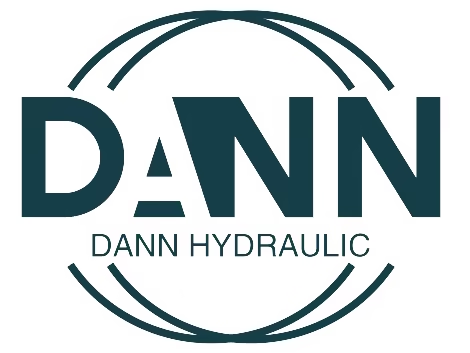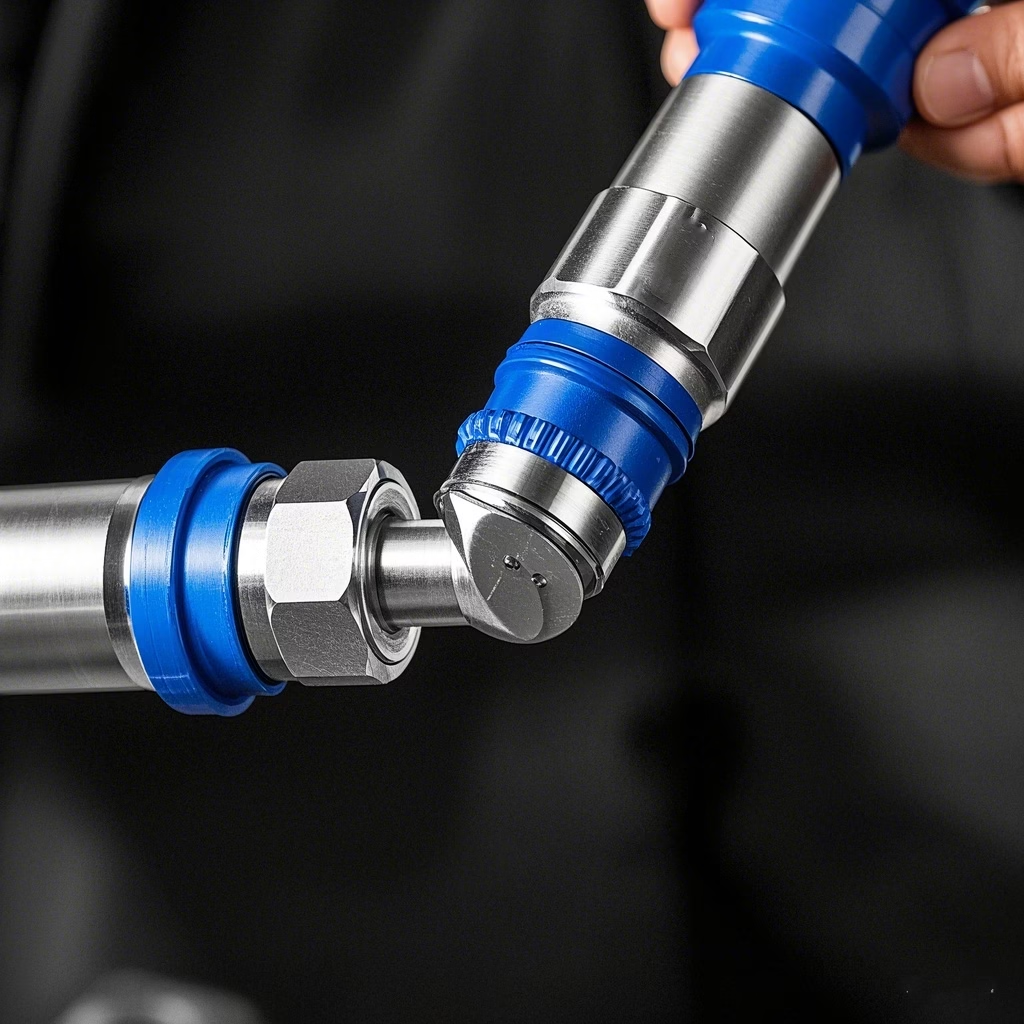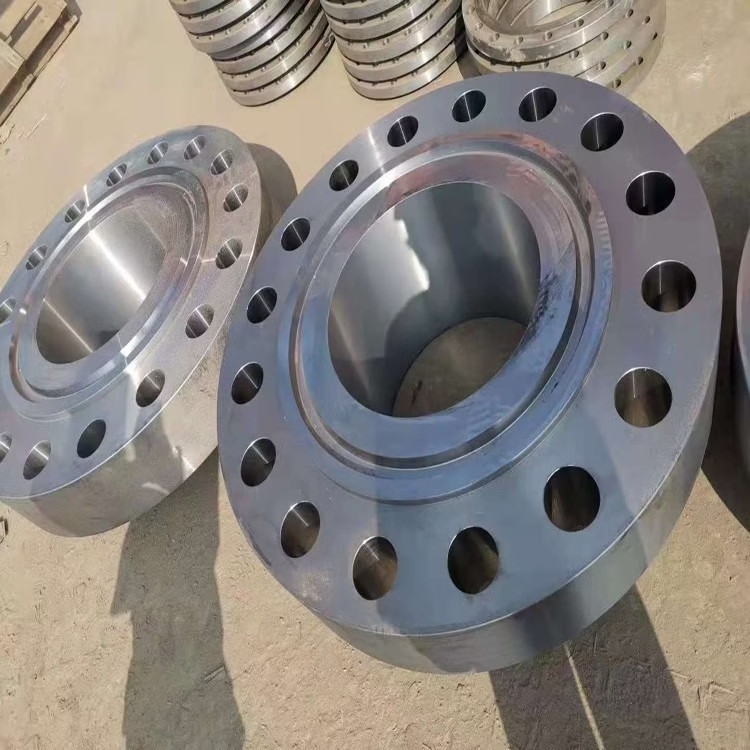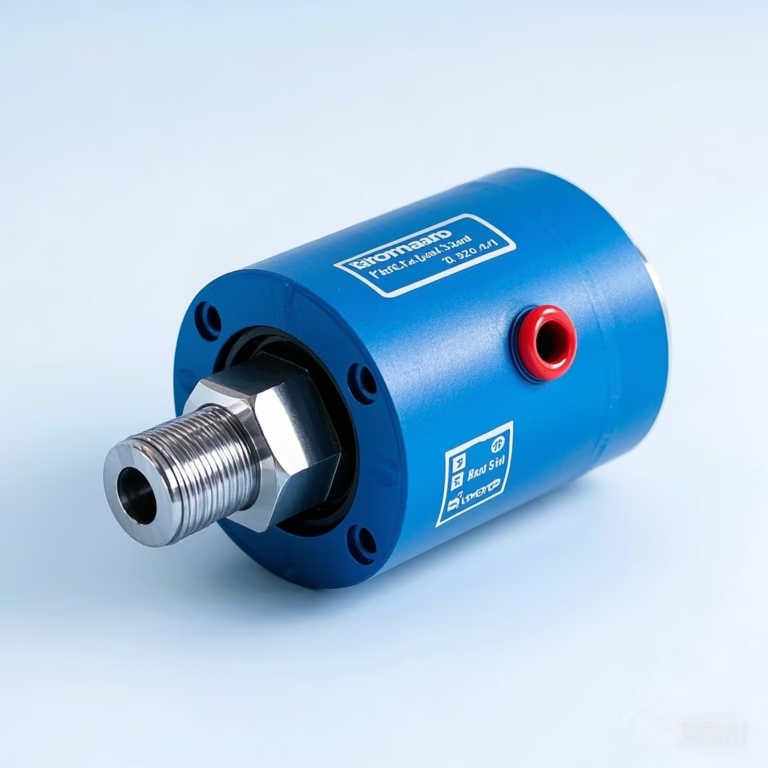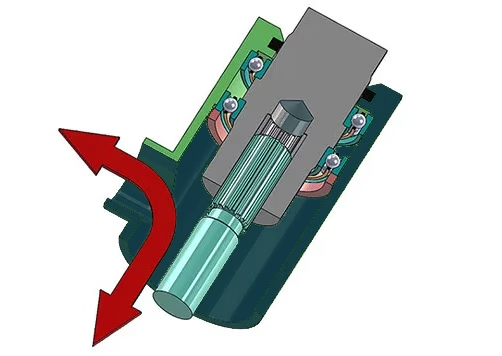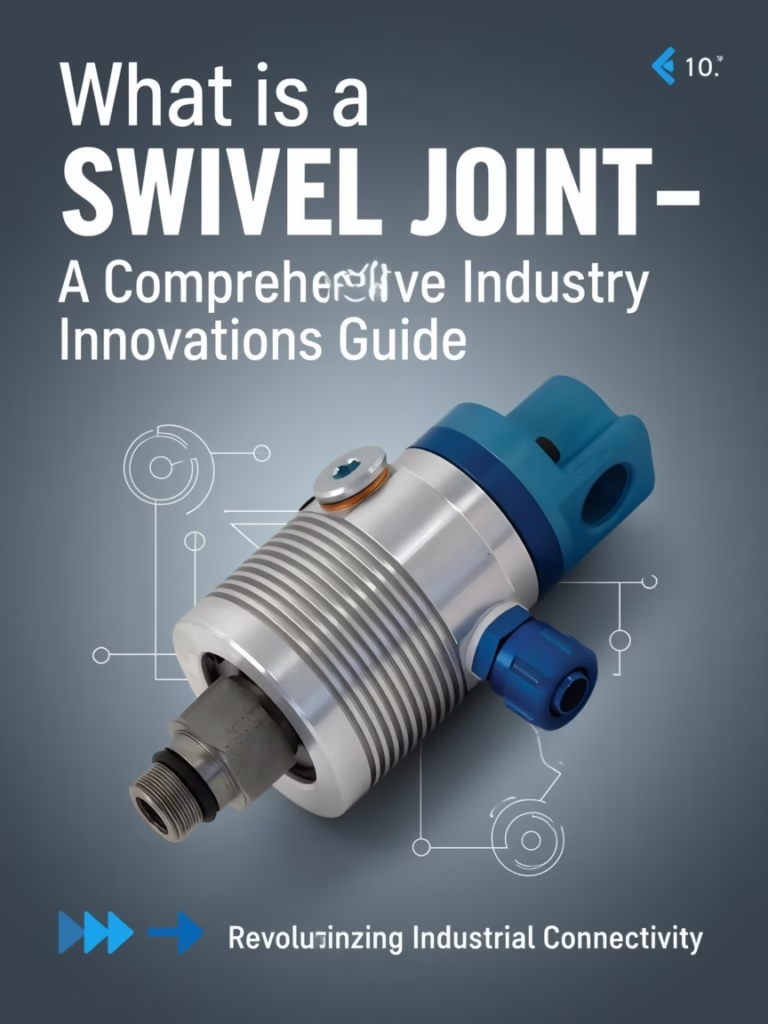Does a swivel joint change torque specs?
In mechanical systems, torque specification is a critical parameter that determines power transmission efficiency, component durability, and overall system performance. Swivel joints, also known as universal joints or flexible couplings, are essential components in applications requiring torque transmission across rotating or pivoting interfaces. In theory, a perfectly aligned swivel joint should not alter torque specs. However, real-world factors such as Friction, Angular Deflection, and Dynamic Loads influence. These factors can collectively impact torque transmission efficiency and stability. This article delves into whether swivel joints alter torque specifications, exploring their mechanical behavior, influencing factors, and real-world implications. We’ll analyze technical principles, industry-specific applications, testing methodologies, and mitigation strategies to provide a holistic understanding.
Understanding Swivel Joints and Torque Transmission
1. Swivel Joints
1.1 What is a swivel joint
A swivel joint is a mechanical device designed to transfer torque between two shafts with angular misalignment. Swivel joints play a critical role in fluid transfer systems, allowing rotational movement while maintaining pressure integrity. However, engineers and maintenance professionals often debate whether these components alter torque specifications in connected machinery. This article provides a technical breakdown of swivel joint mechanics, torque transmission principles, and real-world applications to determine their impact on torque specs. For more details, kindly read https://dannhydraulic.com/what-is-swivel-joint/.
1.2 Core Components of Swivel Joints
Its core components typically include:
Inner/Outer Joint Members: These components house spherical bearings or ball-and-socket mechanisms.
Torque-Transmitting Elements: Balls, needles, or flexible bearings that allow articulation while maintaining contact.
Retention Mechanisms: Springs, snap rings, or threaded collars to secure components under load.
1.3 How Swivel Joints Work
A swivel joint consists of the following:
Stationary Housing: Connected to fixed piping
Rotating Shaft: Attached to moving equipment
Sealing Mechanism: Prevents fluid leakage during rotation
Bearings: Reduce friction between rotating parts
For more details, kindly read https://dannhydraulic.com/how-swivel-joints-work/.
2. Torque
2.1 What is Torque?
Torque is the rotational force applied to an object, measured in Newton-meters (N·m) or pound-feet (lb·ft). In swivel joints, torque specifications define the maximum rotational force the joint can handle without failure.
2.2 Torque Specifications
Torque specs define the rotational force required to achieve proper tension in mechanical connections.
Technical Data:
Ball Bearing: Friction Coefficient 0.001–0.003, Max RPM Rating 5,000;
Roller Bearing: Friction Coefficient 0.002–0.005, Max RPM Rating 3,000.
Manufacturers provide these values to ensure:
Joint integrity under operational loads
Preventing over-tightening (which causes material fatigue)
Avoiding under-tightening (leading to leaks or failures)
2.3 Key Factors Influencing Torque Specs
Angular Deflection
Mechanism: As deflection angles increase, contact points between torque-transmitting elements shift, reducing effective contact area.
Impact: Higher friction and reduced torque capacity. For example, a deflection beyond 15° may cause a 10–15% drop in torque efficiency in automotive drive shafts.
Lubrication and Wear
Dry Operation: Unlubricated joints experience rapid wear, leading to torque fluctuations.
Lubrication Type: High-viscosity fluids reduce friction but may introduce drag at low temperatures.
Material and Manufacturing Tolerances
Material Selection: Hardened steel vs. composite bearings affects wear resistance and load capacity.
Manufacturing Precision: Tighter tolerances minimize backlash and improve torque consistency.
Environmental Conditions
Temperature: Thermal expansion alters component clearance, impacting torque transmission.
Corrosion: Environmental factors (e.g., moisture, chemicals) degrade surfaces, increasing friction.
3. Do Swivel Joints Alter Torque Requirements?
3.1 Frictional Resistance
Swivel joints introduce additional friction due to: Bearing contact surfaces/ Seal compression forces,/ Fluid viscous drag.
Impact on Torque:
Increases required torque by 5–15% for standard applications
Up to 30% increase in high-pressure/high-speed systems
3.2 Dynamic Load Redistribution
As the equipment rotates, the swivel joints:
Create bending moments in connected shafts
Alter the load distribution across fasteners
Require torque adjustments to compensate for misalignment
Case Study: A hydraulic crane using uncalibrated swivel joints experienced 22% higher torque demands at 90° rotation angles
3.3 Lubrication Degradation
Over time, the lubricant breaks down:
Increases the coefficient of friction by 40–60%
Causes torque creep (gradual increase in required force)
Maintenance Tip: Use high-temperature grease (e.g., lithium complex) for 30% longer lubrication intervals
How Swivel Joints Influence Torque Specifications
Swivel joints can alter torque specifications due to their mechanical properties and operational conditions. Below are critical considerations:
1. Joint Design and Torque Resistance
The structural design of a swivel joint directly impacts its torque-handling capacity. For example:
Retention torque: The DKSF swivel mount for control panels specifies a retention torque of 30 N·m when the clamp lever is tightened, ensuring stable rotation under load.
Allowable moment: Industrial swivel joints like the DKSF-115-45 have an allowable moment of 200 N·m, which defines the maximum eccentric load they can sustain without failure.
Impact: Poorly designed joints may require lower torque limits to avoid mechanical stress, while reinforced joints (e.g., high-pressure hydraulic models) tolerate higher torque.
2. Dynamic vs. Static Torque
Dynamic torque: Occurs during rotation, influenced by friction and angular velocity. For example, robotic arm swivel joints experience fluctuating torque during operation.
Static torque: Applied when the joint is stationary. Over-tightening fasteners can exceed static torque limits, leading to component damage.
Example: The DKSF-130-60 swivel mount’s operating torque increased from 4.2 N·m to 25.9 N·m after 21,000 test cycles, highlighting how wear impacts dynamic torque.
3. Application-Specific Torque Adjustments
Swivel joints in high-pressure systems (e.g., hydraulic rotary unions) often require custom torque specs. For instance:
Hydraulic swivel joints: Designed for low-speed, high-torque applications, with reinforced seals to prevent leaks under pressure.
Control panel mounts: Adjustable torque screws allow fine-tuning rotational resistance to match user needs.
Factors That Modify Torque Specifications
Several variables can necessitate torque adjustments in swivel joints:
1. Wear and Material Degradation
Repeated use causes wear in bearings, seals, and contact surfaces, increasing friction and torque resistance. For example, the DKSF-115-45’s operating torque nearly tripled after durability testing.
Solution: Regular lubrication and component replacement maintain optimal torque performance.
2. Environmental Conditions
Temperature: Thermal expansion alters joint clearances, affecting torque.
Contaminants: Dust or corrosion increases friction, raising torque requirements.
3. Load Distribution
Eccentric loads (e.g., off-center control panels) generate moment forces that amplify torque demands. The DKSF series specifies allowable moment limits to guide safe installation.
Torque Spec Adjustment Best Practices
1. Manufacturer Guidelines
Always reference swivel joint manuals for:
Recommended torque ranges (typically ±10% of baseline specs)
Lubrication schedules
Alignment tolerances
2. Finite Element Analysis (FEA)
Modern design tools simulate:
Stress distribution in rotating assemblies
Optimal torque values for specific applications
Thermal expansion effects on joint integrity
Example: FEA modeling reduced torque specs by 8% in a marine swivel joint system
3. Field Testing Protocols
Conduct torque audits using:
Digital torque wrenches (ISO 6789 compliant)
Strain gauges for real-time monitoring
Ultrasonic bolt stretch measurement
Industry-Specific Considerations
1. Aerospace Applications
Swivel joints in fuel systems require torque adjustments of ±3% due to:
Extreme temperature variations (-50°C to +200°C)
High vibration environments
2. Oil & Gas Operations
Subsea swivel joints may need 20–25% higher torque due to:
Hydrostatic pressure compensation
Corrosion-resistant coatings (e.g., electroless nickel)
Technical Data: A 10,000 psi-rated swivel joint showed an 18% torque increase compared to atmospheric models
3. Automotive Manufacturing
Robotic arm swivel joints require torque adjustments based on:
Payload variations
Cycle count fatigue
Gearbox efficiency
Case Study: A car assembly plant reduced robot downtime by 25% using torque-monitoring swivel joints
Industry-specific applications and Torque Variability
1. Automotive Industry
Drive Shafts: Swivel joints in front-wheel-drive systems must handle high torque and articulation.
Steering Columns: Flexible couplings compensate for steering wheel movement, ensuring consistent torque feedback.
Case Study: A major automaker reported a 12% increase in torque fluctuations when swivel joints exceeded their designed deflection angle during off-road testing.
2. Industrial Machinery
Robotics: Swivel joints in articulated arms require precise torque control for repetitive motions.
Material Handling: Rotary unions in conveyor systems face torque variations due to load shifts.
Case Study: A packaging plant reduced downtime by 30% after switching to swivel joints with self-lubricating bearings, minimizing torque variability.
3. Aerospace and Defense
Helicopter Rotor Systems: Swivel joints must withstand extreme vibrations and G-forces.
Missile Guidance: High-precision swivels ensure stable torque delivery during rapid directional changes.
Testing and Validation Methods
To quantify swivel joints’ impact on torque specs, engineers use:
Torque Efficiency Tests: Compare input vs. output torque across deflection angles.
Fatigue Testing: Simulate long-term operation under cyclic loading.
Thermal Analysis: Monitor temperature changes during high-load cycles.
Finite Element Analysis (FEA): Predict stress distribution and failure points.
Example Test Protocol:
Mount the swivel joint in a test rig with adjustable deflection angles.
Apply incremental torque loads from 10% to 150% of rated capacity.
Record torque drop, vibration, and temperature data.
Repeat tests post-lubrication and after simulated wear cycles.
Common Misconceptions Debunked
Myth: All Swivel Joints Reduce Torque
Fact: Design-dependent torque loss (0-25% typical range)
Example: High-precision aerospace joints vs. consumer-grade swivels
Myth: Greasing Eliminates Torque Issues
Fact: Over-lubrication risks and contamination impacts
Best Practice: Grease volume calculators for proper application
Maintenance Strategies for Torque Consistency
Torque Wrench Calibration
Annual Certification: ISO 6789 compliance
Temperature Adjustments: Cold vs. hot torque values
Calibration Records: Audit trail requirements
Mitigation Strategies and Best Practices
1. Design Optimization
Double Cardan Joints: Use two swivel joints in series to cancel out angular velocity fluctuations.
Needle Bearings: Replace balls with needles for higher load capacity and smoother articulation.
2. Maintenance Protocols
Lubrication Schedules: Regular greasing reduces friction by up to 40%.
Wear Monitoring: Implement sensors to track clearance changes in real-time.
3. Dynamic Compensation
Torque Feedback Systems: Adjust input torque based on deflection angles.
Smart Lubrication: Use IoT-enabled systems to dispense lubricant automatically.
4. Material Innovations
Ceramic Coatings: Enhance wear resistance in high-temperature applications.
Polymer Bearings: Reduce noise and vibration in low-load systems.
FAQs About Swivel Joints and Torque
Q1: Can I reuse a swivel joint after torque adjustment?
A1: Yes, if within the manufacturer-recommended tolerance limits. Always inspect for wear.
Q2: What’s the maximum torque loss in swivel joints?
A2: Typically 15-25% for unlubricated joints; <5% with proper maintenance.
Q3: Do torque specs vary between swivel joint materials?
A3: Yes. Titanium joints require 20-30% lower torque than steel due to lower yield strength.
Q1: Can I reuse torque specs from non-rotating systems?
A1: No—always consult swivel joint manufacturers for adjusted values.
Q2: How often should I recalibrate torque wrenches?
A2: Every 6 months or after 1,000 uses (ISO 6789 compliance).
Q3: Do swivel joints affect reverse torque?
A3: Yes—dynamic sealing forces increase reverse torque by 5–12%.
Conclusion
Swivel joints do not inherently alter torque specifications in ideal conditions but can introduce variability under real-world stresses. Factors such as deflection angles, lubrication, and environmental conditions play pivotal roles. By combining rigorous testing, advanced materials, and intelligent design, engineers can mitigate torque fluctuations and ensure reliable performance.
Swivel joints do impact torque specifications, but the magnitude depends on design, application, and maintenance practices. Properly engineered joints with advanced bearings and predictive maintenance can minimize torque deviations while ensuring system reliability. For engineers and maintenance teams, understanding these torque dynamics is critical for optimizing performance and safety in rotating machinery.
Final Thoughts
For professionals in automotive, aerospace, or industrial sectors, understanding swivel joint behavior is critical. Prioritize component selection based on deflection limits, lubrication requirements, and material compatibility. Regular maintenance and dynamic compensation strategies will further safeguard torque integrity. As technology evolves, innovations like adaptive lubrication and predictive analytics will redefine torque management in swivel joints.
